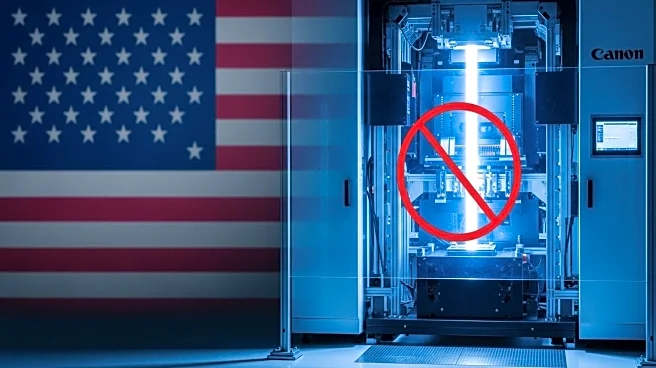What is the story about?
What's Happening?
President Trump has eliminated the de minimis tariff exemption, effective August 29, 2025, affecting U.S.-bound shipments valued at $800 or less. This change impacts cross-border sellers who relied on the exemption to import low-value packages duty-free. The U.S. Postal Service has a six-month transition period to implement the new policy. The exemption's removal alters the competitive landscape for e-commerce, affecting dropshippers, fast-fashion brands, and small retailers. American businesses that source domestically may benefit from reduced competition from foreign sellers.
Why It's Important?
The removal of the de minimis exemption marks a significant shift in U.S. trade policy, potentially increasing costs for consumers and complicating import processes for e-commerce businesses. Dropshippers and fast-fashion brands may face higher landed costs, impacting their margins. Conversely, domestic retailers could gain a competitive advantage, as they already pay import duties. The policy change aims to level the playing field for American manufacturers and address concerns about drug trafficking linked to duty-free imports. This development underscores the importance of adapting to evolving trade regulations.
What's Next?
The Trump administration may use trade policy as leverage, potentially restoring or modifying the exemption if foreign governments make concessions. The exemption was set to end permanently in 2027, following a congressional vote to close perceived loopholes. E-commerce businesses must adapt to the new landscape, navigating import complexities and potential price increases. The industry has previously adjusted to challenges such as sales tax implementations and supply chain disruptions, suggesting resilience in the face of regulatory changes.
Beyond the Headlines
The end of the de minimis exemption could spur innovation among American e-commerce businesses, encouraging them to explore new strategies for competitiveness. The shift may lead to increased domestic production and sourcing, fostering growth in local manufacturing. As businesses adapt, there may be opportunities for new partnerships and collaborations within the industry. The change also highlights broader trade policy dynamics, reflecting ongoing tensions between the U.S. and China.
AI Generated Content
Do you find this article useful?














